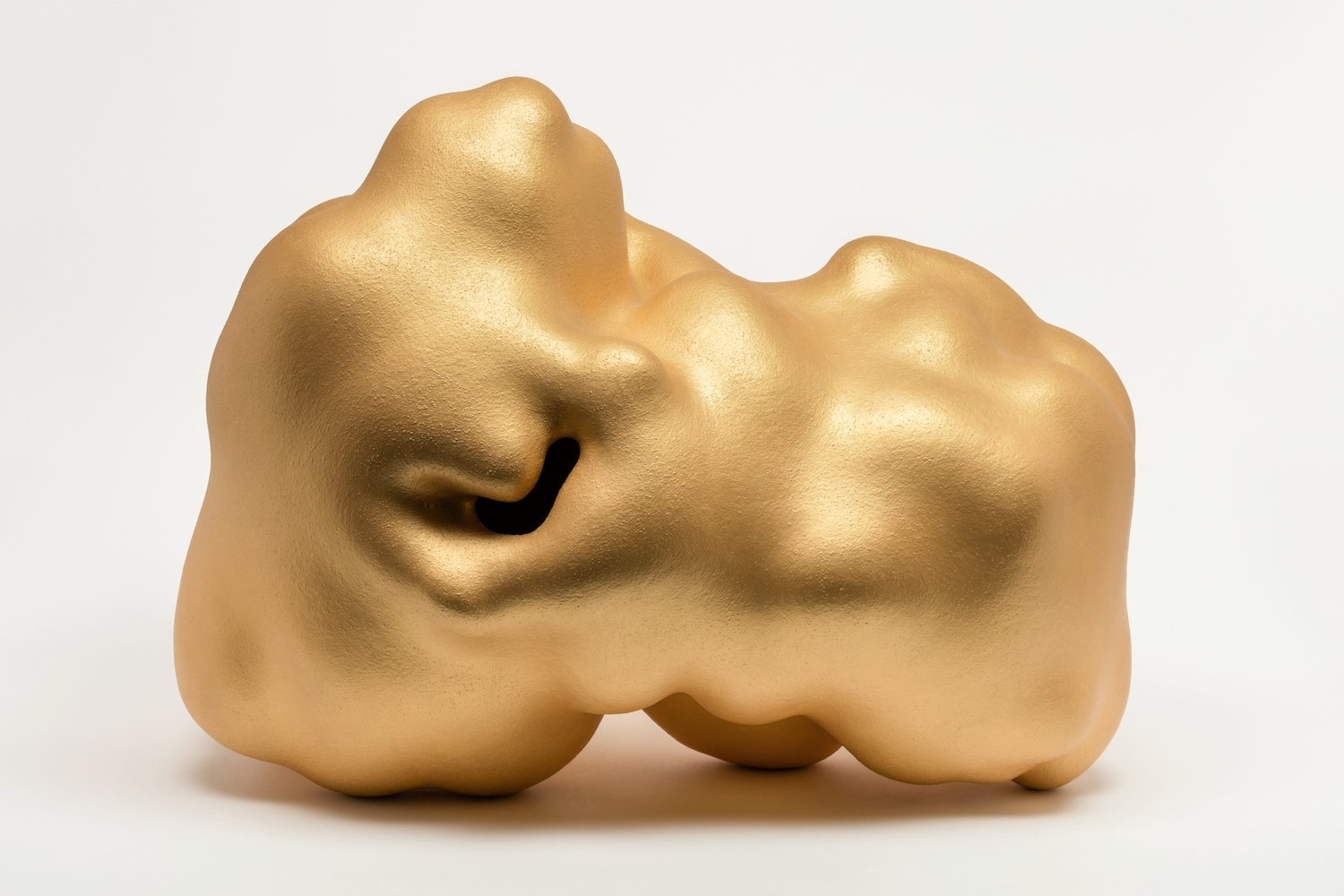
Kenneth Price’s massive survey exhibition at Hauser & Wirth’s London gallery celebrates the legendary West Coast artist’s influential oeuvre five years after his death. Whilst Price’s impact on contemporary art has been well documented, information on his market has not yet been thoroughly explored.
Spanning 180 works over a 40-year period, the exhibition focuses on his iconic ceramic sculptures and drawings—the two most prolific modes of Prices work.
Price emerged from the nascent Los Angeles art scene of the 1960’s alongside contemporaries including Larry Bell, Ed Ruscha, Joe Goode, Edward Kienholz, John Altoon, Wallace Berman, and Billy Al Bengston. He is best known for his brightly colored ceramic sculptures, and it is these works that command the highest prices at auction. In recent years this demand for Price’s ceramics has grown, with eight of his top 10 selling lots changing hands between 2013 and 2016.
A spike of activity in 2006 resulted from David Whitney’s estate going under the hammer at Sotheby’s. The prolific collector owned a large number of Price’s works which attracted significant attention from buyers when they came onto the market. The auction included numerous examples of the artist’s work, including two ceramic sculptures that sold for over $200,000.
According to artnet’s Price Database, demand for Price’s work peaked in 2013, when the artist’s market experienced a surge of interest following his death and subsequent posthumous retrospective at the Los Angeles County Museum of Art, one that eventually travelled to the Nasher Sculpture Center in Dallas and the Metropolitan Museum of Art in New York. The artist succumbed to cancer in 2012, only six months before the opening of the show, which was several years in the making.
Heightened interest in the artist continued throughout the following year when works came onto the market consigned by collectors looking to cash in on the renewed enthusiasm for Price oeuvre. The flurry of interest peaked in March 2014 when Price’s auction record of $509,000 was set at Phillips New York, whilst his second highest-selling lot was recorded at $317,000 at Christie’s New York on the same day.
“I’ve seen a pretty notable uptick of interest in his work over the past couple of years,” Scott Nussbaum, head of 20th century and contemporary art at Phillips, New York, told artnet News in a telephone interview. “Matthew [Marks] and Hauser & Wirth are doing a great job pushing his market. And the critical thing is, they’re making people reevaluate his work and understand it from a sculptural perspective more than from a decorative art perspective.”
Installation view of “Ken Price” at Hauser & Wirth. Courtesy Hauser & Wirth
“Right now demand is mostly for the later acrylic painted pieces,” Nassbaum continued. “That’s probably because they are also the ones that people are most likely to get access to. The early 60s pieces like the one we have the record for, the 1964 Pink Egg, those pieces are very, very difficult to find.”
Interest in the artist’s drawings has followed a similar trajectory, although the subject matter is very distinct from his sculptural work. Amongst his extensive body of work on paper, Price’s drawings relating to his ceramic works, such as studies for sculptures, as well as quintessentially Los Angeles landscapes and interiors, generate the highest prices. In May 2016 the record for Price’s works on paper was set at Los Angeles Modern Auctions when his L.A. Riot (1994) sold for $58,750. Each drawing in the artist’s top 10 selling works on paper considers similar themes.
“Price’s drawing appears to have more participants than his ceramics,” Peter Loughrey, director of Los Angeles Modern Auctions told artnet News in an email. “One possible reason for this is that significantly sized ceramics have become exorbitantly priced. Many times in the low six figures. The drawings, by comparison, I believe are a bargain.”
“Size matters,” Loughrey added. “Many of his works are small in size and unusually large examples can bring much higher prices. We have noticed that collectors prefer compositions that relate to his ceramic series…The example which sold for the highest amount in our auction (L.A. Riot, 1994), had additional qualities such as subtle editorializing, historical referencing, and geographic resonance.”
Ken Price, Wave (1999). (c) Estate of Ken Price, Courtesy Matthew Marks Gallery.
Nussbaum however maintains that “Most people still [see] him as a sculptor, so naturally there’s going to be more demand for his sculptures than there is for his works on paper. The overarching demand is still for sculpture.”
Whilst Price has always enjoyed the support of a select group of collectors, recent institutional support, careful management of the artist’s estate, a string of domestic and international gallery exhibitions, and the broader acceptance of ceramics as a fine art form have all combined to generate interest from a new audience. Loughrey concluded, “With all of the recent exhibits at museums, galleries, and art fairs since the artist’s death, the realization is that a very finite number of examples exist, which I believe is driving the market at this time.”